Simultaneous OTDR Dynamic Range and Spatial Resolution Enhancement by Digital LFM Pulse and Short-Time FrFT
Abstract
1. Introduction
2. Principle and Signal Processing Method
2.1. Digital LFM Signal and Direct Detection
2.2. Short-Time Fractional Fourier Transform
2.3. Sidelobe Suppression
3. Experimental Setup and Results & Discussion
4. Conclusions
Author Contributions
Funding
Acknowledgments
Conflicts of Interest
References
- Personick, S.D. Photon probe—An optical-fiber time-domain reflectometer. Bell Syst. Tech. J. 1977, 56, 355–366. [Google Scholar] [CrossRef]
- Barnoski, M.K.; Rourke, M.D.; Jensen, S.M.; Melville, R.T. Optical time domain reflectometer. Appl. Opt. 1977, 16, 2375–2379. [Google Scholar] [CrossRef] [PubMed]
- Laferriere, J.; Saget, M.; Champavere, A. Original method for analyzing multipaths networks by OTDR measurement. In Proceedings of the Optical Fiber Communication Conference, Dallas, TX, USA, 1997; pp. 99–101. [Google Scholar]
- Urban, P.J.; Vall-llosera, G.; Medeiros, E.; Dahlfort, S. Fiber plant manager: An OTDR-and OTM-based PON monitoring system. IEEE Commun. Mag. 2013, 51, S9–S15. [Google Scholar] [CrossRef]
- Healey, P.; Booth, R.C.; Daymond-John, B.E.; Nayar, B.K. OTDR in single-mode fibre at 1.5 μm using homodyne detection. Electron. Lett. 1984, 20, 360–362. [Google Scholar] [CrossRef]
- Koyamada, Y.; Nakamoto, H. High performance single mode OTDR using coherent detection and fibre amplifiers. Electron. Lett. 1990, 26, 573–575. [Google Scholar] [CrossRef]
- Healey, P. Multichannel photon-counting backscatter measurements on monomode fibre. Electron. Lett. 1981, 17, 751–752. [Google Scholar] [CrossRef]
- Eraerds, P.; Legre, M.; Zhang, J.; Zbinden, H.; Gisin, N. Photon Counting OTDR: Advantages and Limitations. J. Lightwave Technol. 2010, 28, 952–964. [Google Scholar] [CrossRef]
- Nazarathy, M.; Newton, S.A.; Giffard, R.P.; Moberly, D.S.; Sischka, F.; Trutna, W.R.; Foster, S. Real-time long range complementary correlation optical time domain reflectometer. J. Lightwave Technol. 1989, 7, 24–38. [Google Scholar] [CrossRef]
- Jones, M.D. Using simplex codes to improve OTDR sensitivity. IEEE Photonics Technol. Lett. 1993, 5, 822–824. [Google Scholar] [CrossRef]
- Lee, D.; Yoon, H.; Kim, P.; Park, J.; Kim, N.Y.; Park, N. SNR enhancement of OTDR using biorthogonal codes and generalized inverses. IEEE Photonics Technol. Lett. 2005, 17, 163–165. [Google Scholar]
- Izumita, H.; Koyamada, Y.; Furukawa, S.; Sankawa, I. The performance limit of coherent OTDR enhanced with optical fiber amplifiers due to optical nonlinear phenomena. J. Lightwave Technol. 1994, 12, 1230–1238. [Google Scholar] [CrossRef]
- Martins, H.F.; Martin-Lopez, S.; Corredera, P.; Salgado, P.; Frazão, O.; González-Herráez, M. Modulation instability-induced fading in phase-sensitive optical time-domain reflectometry. Opt. Lett. 2013, 38, 872–874. [Google Scholar] [CrossRef] [PubMed]
- King, J.; Smith, D.; Richards, K.; Timson, P.; Epworth, R.; Wright, S. Development of a coherent OTDR instrument. J. Lightwave Technol. 1987, 5, 616–624. [Google Scholar] [CrossRef]
- Healey, P. Fading in heterodyne OTDR. Electron. Lett. 1984, 20, 30–32. [Google Scholar] [CrossRef]
- Lee, D.; Yoon, H.; Kim, P.; Park, J.; Park, N. Optimization of SNR improvement in the noncoherent OTDR based on simplex codes. J. Lightwave Technol. 2006, 24, 322–328. [Google Scholar]
- Eickhoff, W.; Ulrich, R. Optical frequency domain reflectometry in single-mode fiber. Appl. Phys. Lett. 1981, 39, 693–695. [Google Scholar] [CrossRef]
- Bao, X.; Chen, L. Recent progress in distributed fiber optic sensors. Sensors (Basel) 2012, 12, 8601–8639. [Google Scholar] [CrossRef]
- Uttam, D.; Culshaw, B. Precision time domain reflectometry in optical fiber systems using a frequency modulated continuous wave ranging technique. J. Lightwave Technol. 1985, 3, 971–977. [Google Scholar] [CrossRef]
- Venkatesh, S.; Sorin, W.V. Phase noise considerations in coherent optical FMCW reflectometry. J. Lightwave Technol. 1993, 11, 1694–1700. [Google Scholar] [CrossRef]
- Yang, S.; Zou, W.; Long, X.; Chen, J. Pulse-compression optical time domain reflectometer. In Proceedings of the Society of Photo-Optical Instrumentation Engineers Society of Photo-Optical Instrumentation Engineers (SPIE) Conference Series, Santander, Spain, 2 June 2014. [Google Scholar]
- Yang, S.; Zou, W.; Long, X.; Chen, J. Optical pulse compression reflectometry: Proposal and proof-of-concept experiment. Opt. Express 2015, 23, 512–522. [Google Scholar]
- Tao, R.; Li, Y.-L.; Wang, Y. Short-Time Fractional Fourier Transform and Its Applications. In Proceedings of the IEEE Transactions on Signal Processing, Piscataway, NJ, USA, 14 April 2010; Volume 58, pp. 2568–2580. [Google Scholar]
- Aled, T.C.; Williams, D.P. High resolution spectrograms using a component optimized short-term fractional Fourier transform. Signal Process. 2010, 90, 1591–1596. [Google Scholar]
- Namias, V. The fractional order Fourier transform and its application to quantum mechanics. J. Inst. Math. Appl. 1980, 25, 241–265. [Google Scholar] [CrossRef]
- McBride, A.C.; Kerr, F.H. On Namias’s fractional Fourier transforms. IMA J. Appl. Math. 1987, 39, 159–175. [Google Scholar] [CrossRef]
- Almeida, L.B. The fractional Fourier transform and time-frequency representations. IEEE Trans. Signal Process. 1994, 42, 3084–3091. [Google Scholar] [CrossRef]
- Sergio, B.; Scaglione, A. Adaptive time-varying cancellation of wideband interferences in spread-spectrum communications based on time-frequency distributions. IEEE Trans. Signal Process. 1999, 47, 957–965. [Google Scholar]
- Xia, X.G. A quantitative analysis of SNR in the short-time Fourier transform domain for multicomponent signals. IEEE Trans. Signal Process. 1998, 46, 200–203. [Google Scholar]
- Temes, C.L. Sidelobe Suppression in a Range-Channel Pulse-Compression Radar. IRE Trans. Mil. Electron. 1962, 1051, 162–169. [Google Scholar] [CrossRef]
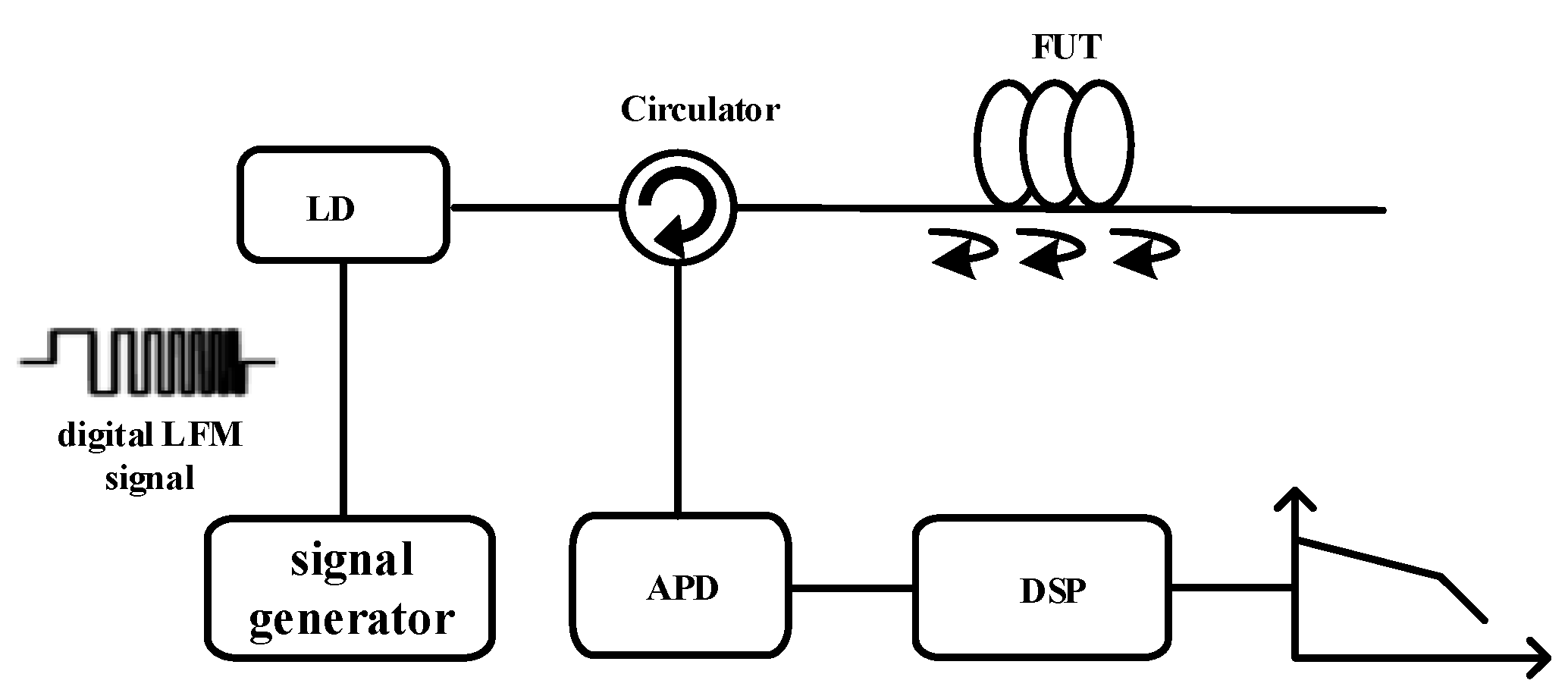


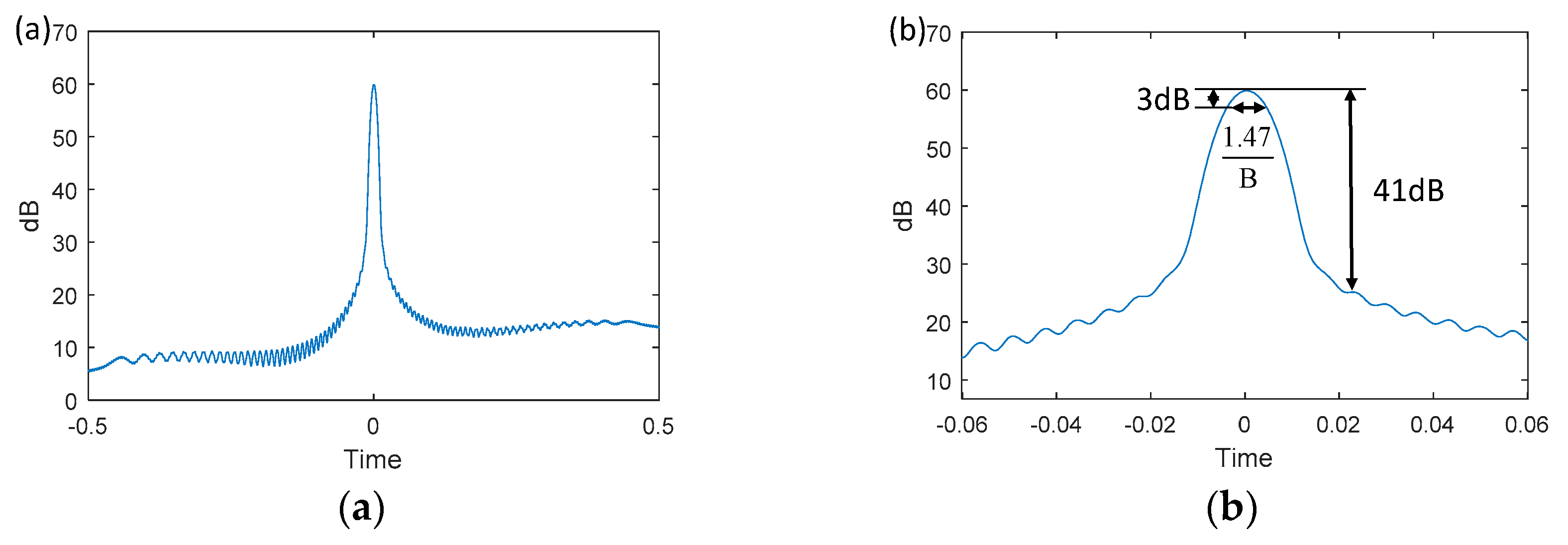

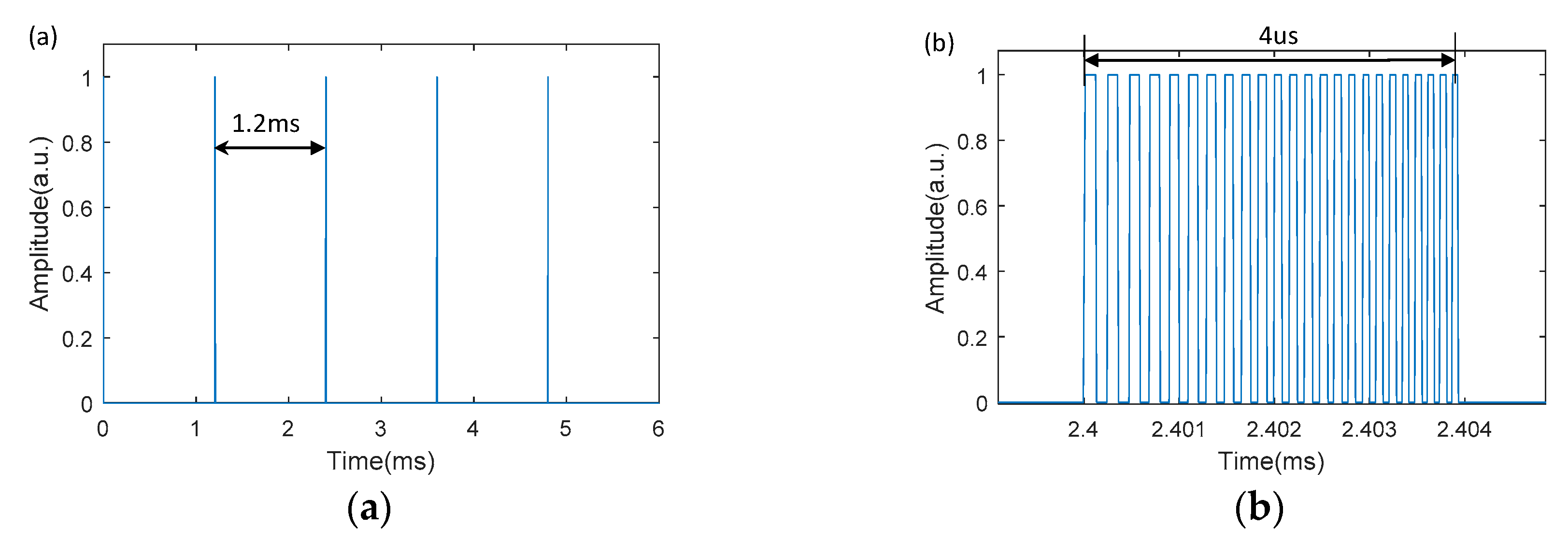
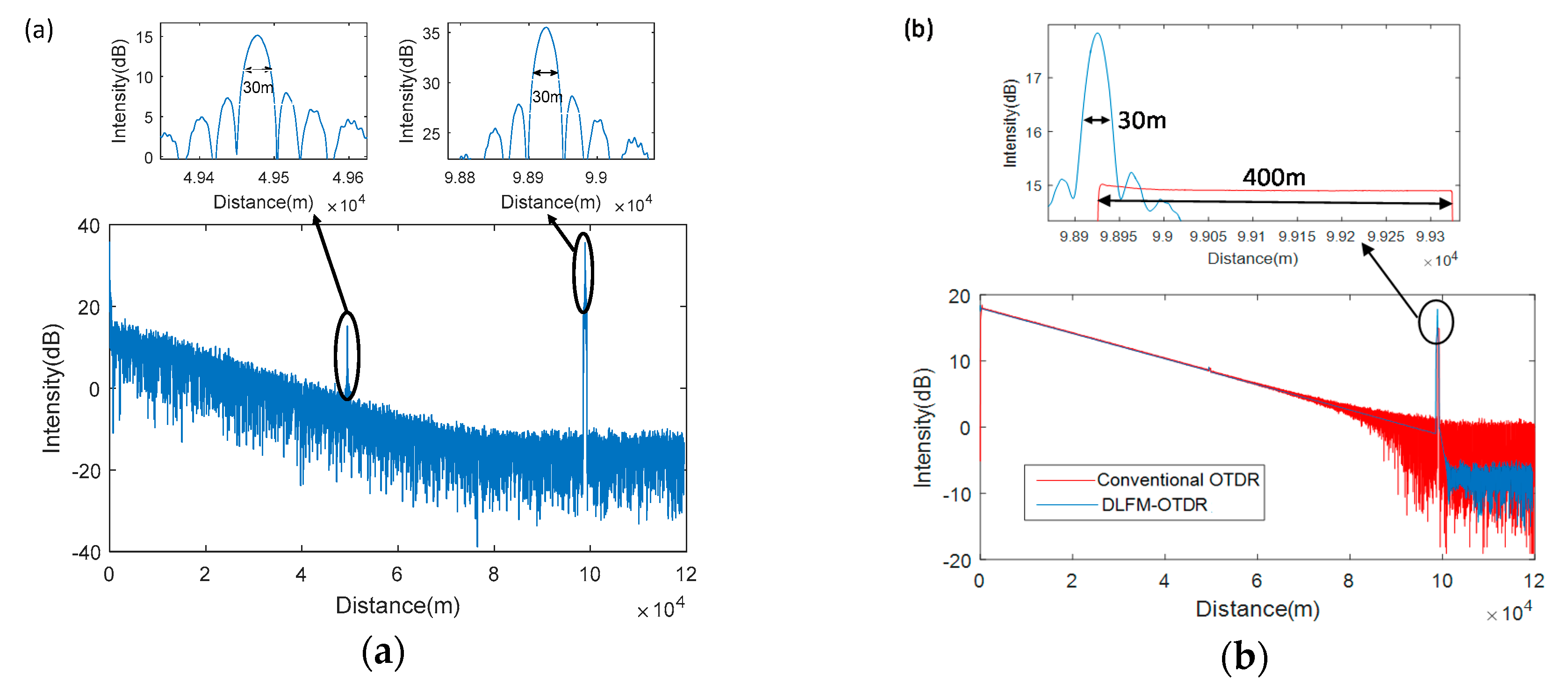
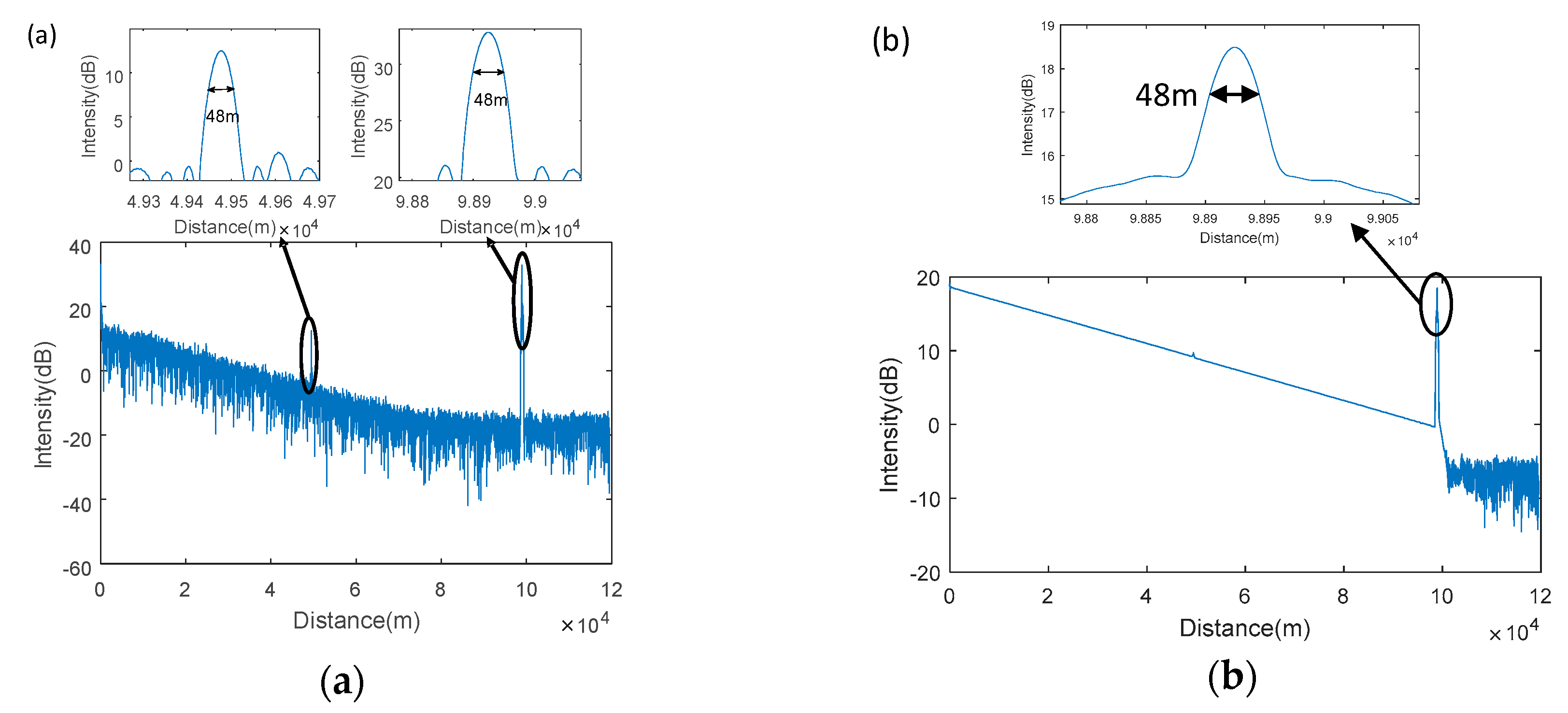
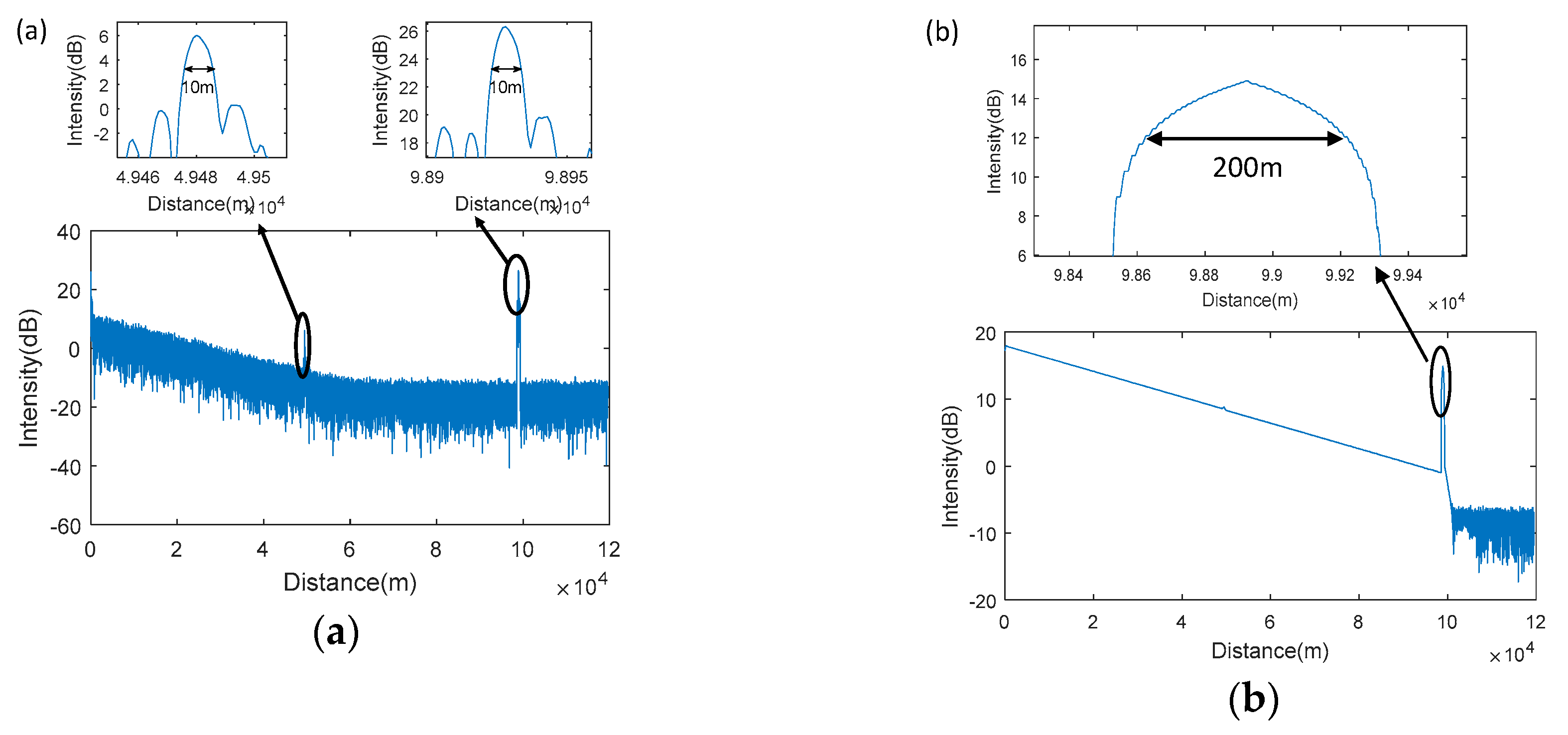
© 2019 by the authors. Licensee MDPI, Basel, Switzerland. This article is an open access article distributed under the terms and conditions of the Creative Commons Attribution (CC BY) license (http://creativecommons.org/licenses/by/4.0/).
Share and Cite
Zhang, P.; Feng, Q.; Li, W.; Zheng, Q.; Wang, Y. Simultaneous OTDR Dynamic Range and Spatial Resolution Enhancement by Digital LFM Pulse and Short-Time FrFT. Appl. Sci. 2019, 9, 668. https://doi.org/10.3390/app9040668
Zhang P, Feng Q, Li W, Zheng Q, Wang Y. Simultaneous OTDR Dynamic Range and Spatial Resolution Enhancement by Digital LFM Pulse and Short-Time FrFT. Applied Sciences. 2019; 9(4):668. https://doi.org/10.3390/app9040668
Chicago/Turabian StyleZhang, Pu, Qiguang Feng, Wei Li, Qiang Zheng, and You Wang. 2019. "Simultaneous OTDR Dynamic Range and Spatial Resolution Enhancement by Digital LFM Pulse and Short-Time FrFT" Applied Sciences 9, no. 4: 668. https://doi.org/10.3390/app9040668
APA StyleZhang, P., Feng, Q., Li, W., Zheng, Q., & Wang, Y. (2019). Simultaneous OTDR Dynamic Range and Spatial Resolution Enhancement by Digital LFM Pulse and Short-Time FrFT. Applied Sciences, 9(4), 668. https://doi.org/10.3390/app9040668



